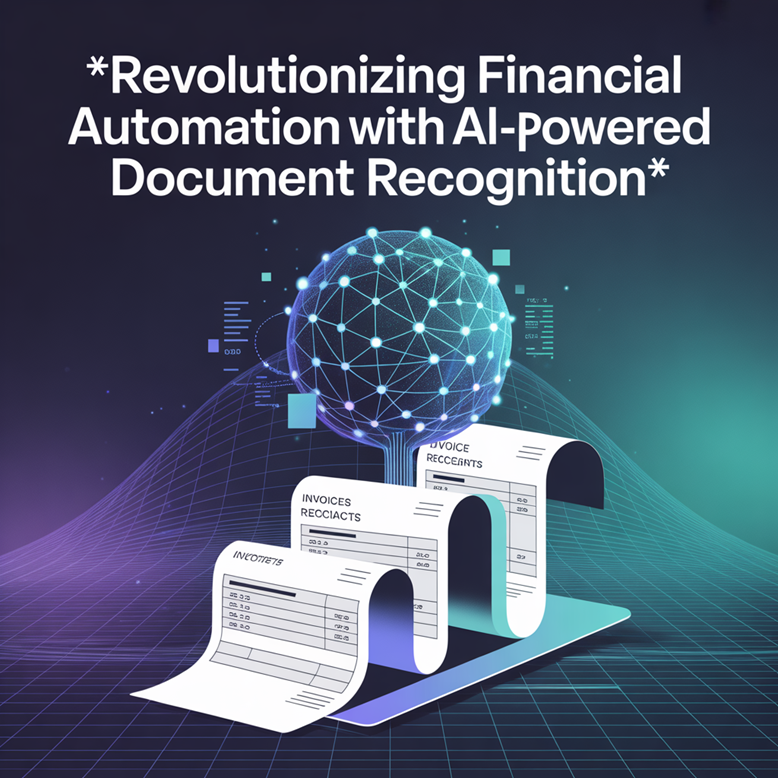
The landscape of financial document processing is undergoing a remarkable transformation, thanks to advancements in Artificial Intelligence (AI) and Optical Character Recognition (OCR) technologies. In this article, Ranadheer Reddy Charabuddi sheds light on the innovations driving this evolution and their profound implications for the finance industry.
Unveiling the Power of AI in Financial Document Processing
The financial sector faces an overwhelming volume of documents each day, with institutions grappling to process invoices, receipts, and statements efficiently. Traditional OCR systems, while useful, fall short when dealing with the complexities of diverse document formats, handwritten text, and low-quality scans. These limitations have created bottlenecks that hinder operational efficiency, leading to delays and increased costs.
AI-enhanced OCR technologies are changing the game by incorporating deep learning algorithms and natural language processing (NLP). The integration of AI allows systems to adapt to new document variations dynamically, improving extraction accuracy and eliminating the need for manual intervention. With improvements in AI-powered document recognition, financial institutions are now achieving recognition accuracy rates of up to 97%, significantly reducing the time and costs associated with document handling.
A Leap Beyond Template-Based OCR Systems
Traditional OCR systems relied on fixed templates and manual configurations, requiring significant resources to adapt to new document types. With the advent of AI and deep learning, modern OCR systems can now learn from diverse document structures and adapt to unseen formats with high precision. The shift to AI-driven Intelligent Document Processing (IDP) allows businesses to streamline workflows, process financial data across various document types, and achieve cost savings, operational improvements, and better regulatory compliance.
Harnessing the Power of Deep Neural Networks
AI-enhanced OCR relies on deep neural networks (DNNs), particularly Convolutional Neural Networks (CNNs) and Recurrent Neural Networks (RNNs), to process visual and textual data for accurate document classification. CNNs, for example, have improved classification accuracy by 37.8% compared to traditional methods, excelling at analyzing complex financial documents. Additionally, AI leverages advanced NLP techniques, including transformer-based models, to comprehend the context and semantics of ambiguous financial documents, ensuring data extraction aligns with the intended financial meaning.
The Benefits of AI-Enhanced OCR in Financial Operations
AI-powered OCR systems offer substantial operational advantages for financial organizations. Notably, they allow for reductions of 60–75% in document processing time and 40–55% in processing costs. These improvements lead to faster transaction cycles, enhanced cash flow forecasting, and a reduction in payment errors and duplicate payments.
Moreover, AI's ability to understand financial terminology and interpret sentiment within documents enhances decision-making processes. Financial institutions can now more accurately assess risk, compliance, and regulatory obligations, making AI-driven document processing a strategic asset.
Multi-Model Learning: A Comprehensive Approach to Document Understanding
The next frontier in AI-enhanced financial document recognition lies in multi-model learning, which integrates visual, textual, and structural information from documents. This technology enables systems to understand documents in a holistic manner, taking into account their layout, content, and context. Multi-model learning not only improves document recognition accuracy by over 27% but also reduces the need for extensive labeled data, making the process more efficient.
Furthermore, AI systems are now adopting self-supervised learning methods, where models continue to refine themselves through exposure to new data, reducing the need for manual retraining. This allows financial institutions to adapt quickly to emerging document formats without the overhead of extensive system updates.
Edge Computing: A Game Changer for Real-Time Document Processing
Edge computing is revolutionizing financial document processing by enabling real-time, low-latency document analysis. Instead of sending documents to centralized servers, edge computing allows for processing to occur at the data source, reducing transmission times by up to 85%. This is especially valuable for financial institutions with distributed operations or those working in low-connectivity environments. Furthermore, edge computing offers enhanced security, as sensitive data is processed and tokenized locally, reducing the risks associated with data transmission.
Shaping the Future of Financial Automation
The integration of AI and OCR is not just improving efficiency; it is transforming the entire approach to financial automation. The combination of neural networks, NLP, multi-model learning, and edge computing is setting a new standard for the industry. Organizations that implement these technologies strategically can expect to see improvements in operational capacity, cost efficiency, and regulatory compliance. As AI continues to evolve, its ability to adapt to new document types and formats will only grow, positioning financial institutions for long-term success in an increasingly competitive market.
In conclusion, Ranadheer Reddy Charabuddi's exploration of AI-enhanced OCR technologies highlights a transformative shift in financial automation. With these innovations, the finance industry is poised to unlock new levels of efficiency, cost savings, and data integrity, fundamentally changing how organizations manage their document-intensive processes.
ⓒ 2025 TECHTIMES.com All rights reserved. Do not reproduce without permission.





